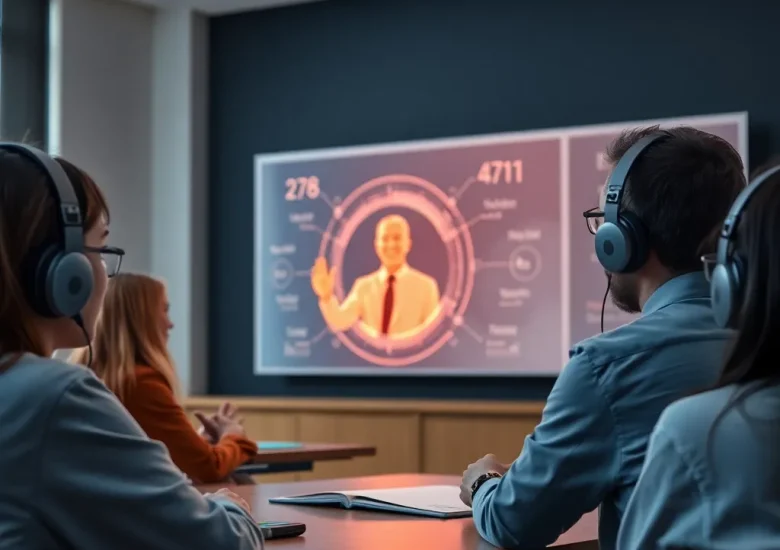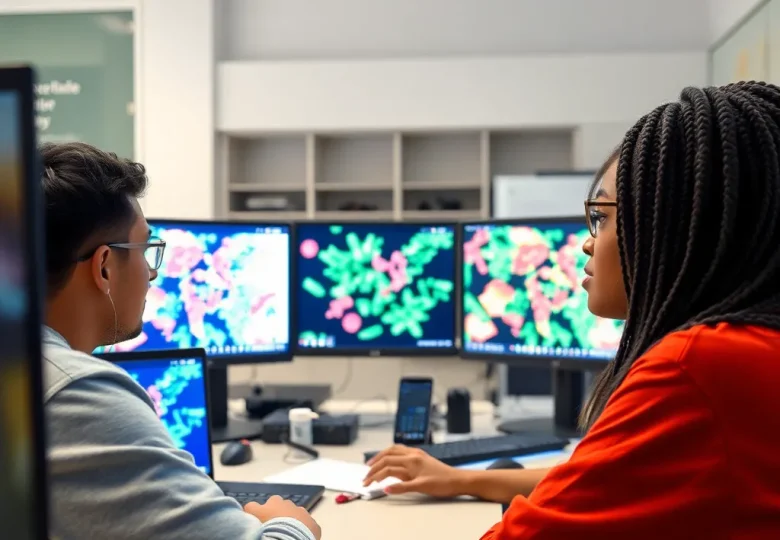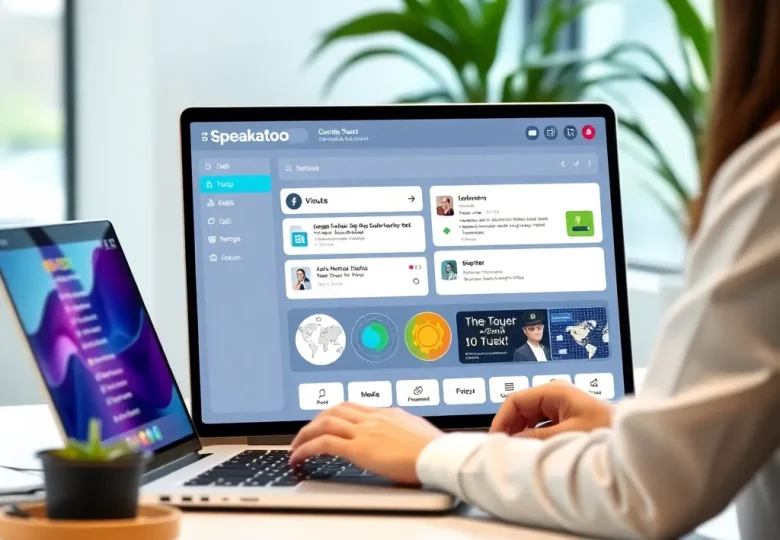Introduction: The Digital Shift in Learning
Education is changing faster than ever. From smartboards to online classrooms, technology has become the heartbeat of modern education. But the real transformation is happening through Artificial Intelligence (AI) — especially in how we listen, speak, and visualize information.
In 2025, AI-powered voices, speech recognition, and visuals are not just futuristic concepts — they are reshaping how students learn and teachers teach. From generating lesson videos in seconds to creating audio lectures in regional languages, AI is bridging accessibility, creativity, and personalization like never before.
Whether you’re a teacher, student, or content creator in the education sector, understanding how AI Voices and Visuals work can help you create more inclusive, engaging, and efficient learning environments.
The Role of AI Voices in Modern Education

AI-generated voices, often called Text-to-Speech (TTS) systems, convert written text into lifelike spoken audio. These tools are not just robotic narrators — they now sound human, expressive, and emotion-driven.
🔹 Why AI Voices Matter in Education
Accessibility for All Learners
Students with visual impairments, reading disabilities (like dyslexia), or learning differences can benefit immensely. AI voices ensure that every learner can consume educational content equally.Multilingual Learning
India alone has 22 major languages. A single TTS tool can narrate lessons in Hindi, Tamil, Bengali, Marathi, or Malayalam — breaking language barriers and expanding reach.Engagement Through Audio
Audio content helps retain attention longer. Students can listen while commuting, exercising, or revising — turning any moment into a learning opportunity.Teacher Productivity
Educators can quickly generate audio summaries, lectures, and podcasts without recording every line manually. This saves hours and keeps lessons consistent in tone and quality.
How Text-to-Speech (TTS) Enhances Learning
1. Language Diversity
Many classrooms today are multilingual. With TTS, teachers can instantly convert lesson notes into audio in multiple languages, ensuring students understand the content in their native tongue.
3. Immersive Storytelling
AI voices add emotion and clarity to storytelling. Educational stories, history chapters, and moral lessons come alive when narrated naturally.
2. Personalized Audio Learning
Students can adjust speed, tone, and pitch — listening to lessons at their comfort level. A student revising complex math problems might prefer slower narration, while another may choose faster playback for summaries.
4. E-Learning Platforms
Popular e-learning apps use TTS to make course material available in audio format, increasing engagement and accessibility for all age groups.
The Power of Speech-to-Text (STT) in Education
Just as TTS converts text to voice, Speech-to-Text (STT) does the reverse — converting spoken language into written form.
🔹 Benefits of STT in Classrooms
- Lecture Transcriptions
Teachers can record lectures, and AI tools automatically transcribe them into text for students who missed the session or prefer reading. - Note Dictation
Students can speak their notes aloud, and the tool instantly turns them into organized text — perfect for revision or digital submission. - Language Learning Support
STT tools help language learners practice pronunciation and fluency by comparing spoken words with written text. - Special Needs Accessibility
Students with motor impairments or writing difficulties can use voice input to complete assignments efficiently.
How AI Visuals Are Changing the Way We Learn

AI visuals are revolutionizing learning materials by turning abstract concepts into interactive and visual content.
🔹 Examples of AI in Educational Visuals
- AI-generated illustrations explain science diagrams or historical events vividly.
- Infographics and data visuals make complex statistics easier to digest.
- AI-powered animations help demonstrate real-world applications of theoretical concepts.
🔹 Benefits
- Visual Engagement
Students remember more when they see what they learn — a principle proven by cognitive learning theories. - Faster Concept Clarity
Visuals help explain complex topics like physics simulations, chemical reactions, or geography in seconds. - Personalized Visual Aids
Teachers can generate specific visuals for their lessons instantly — without relying on stock images or designers.
Combining AI Voices, Speech, and Visuals for Holistic Learning
The true magic happens when AI voices, speech recognition, and visuals come together.
Imagine a student using:
- TTS to listen to a biology chapter,
- AI visuals to see the cell structure, and
- STT to dictate a summary of what they learned.
This multimodal learning approach improves retention, comprehension, and overall engagement — making learning interactive and inclusive.
Real-World Use Cases in Education
🏫 1. Schools and Colleges: Teachers are using TTS and visuals to create bilingual lectures, making lessons accessible for diverse classrooms. STT helps generate instant transcriptions for reference notes.
📚 2. E-Learning Platforms: Platforms like Udemy, Coursera, and regional EdTech startups use AI voices to narrate course modules, while AI visuals make the lessons more engaging.
🧑🏫 3. Language Learning Apps: Apps like Duolingo and Speakatoo-based integrations help users practice pronunciation using STT while listening to native-like voices through TTS.
🎧 4. Podcasts and Audio Lessons: AI helps teachers and creators turn written notes into natural-sounding podcasts in multiple Indian languages.
♿ 5. Accessibility-Focused Learning: Visually impaired and dyslexic learners can consume educational material independently through regional-language audio narration.
Introducing Speakatoo: The All-in-One AI Learning Companion
When it comes to combining AI voices, speech recognition, translation, and visuals, one platform stands out — Speakatoo.
🔹 Why Speakatoo?
Speakatoo is not just a Text-to-Speech platform — it’s a complete AI content creation suite designed for accessibility, creativity, and communication.
🔹 Services of Speakatoo
- Text-to-Speech (TTS) — Convert any text into high-quality, natural voices in 130+ languages, including 12 major Indian ones (Hindi, Tamil, Bengali, Marathi, Kannada, and more).
- Speech-to-Text (STT) — Transcribe lectures, notes, and discussions instantly.
- AI Translation — Translate lessons across languages seamlessly.
- AI Image Generation — Create visual content for learning materials in seconds.
- Voice Cloning — Teachers can clone their voice for a consistent learning experience.
- AI Content Generator — Summarize lessons or create study material quickly.
Step-by-Step: How Educators Can Use Speakatoo

Step 1: Visit the Portal
Go to Speakatoo.com and select the Text-to-Speech or Speech-to-Text module.
Step 2: Choose a Language
Select your preferred Indian or international language for lesson narration or transcription.
Step 3: Add Your Text or Audio
Paste the educational text or upload recorded lectures.
Step 4: Customize
Adjust speed, pitch, tone, and voice emotion — for example, use a “calm” tone for e-learning or “energetic” for storytelling.
Step 5: Preview & Export
Listen, review, and download in MP3 or WAV format. Teachers can embed the audio directly into presentations, PDFs, or LMS platforms.
Advantages of AI-Driven Education
- Inclusive Classrooms — AI helps teachers reach all students, including those with disabilities or language barriers.
- Faster Content Creation — No need for studio recording or design outsourcing.
- Personalized Learning — Each student can choose their pace, voice, and format.
- Better Retention Rates — Combining visuals and voice increases understanding and memory.
- Regional Reach — AI tools make education truly multilingual across India.
The Future of AI-Powered Learning
By 2030, classrooms will no longer be limited to four walls. AI will make personalized learning paths, real-time speech feedback, and 3D visual content part of everyday education.
Students will listen, speak, and visualize knowledge, creating a fully immersive learning experience. And with platforms like Speakatoo, this future is already unfolding.
FAQs
1. What is Text-to-Speech (TTS) in education?
TTS converts written educational content into spoken audio, helping students listen instead of reading.
2. How does Speech-to-Text (STT) help teachers?
STT tools automatically transcribe spoken lectures into text, saving time and improving accessibility.
3. Can AI visuals be used in online courses?
Yes! AI-generated visuals make lessons more interactive and easier to understand.
4. Is Speakatoo suitable for Indian languages?
Absolutely. Speakatoo supports 12+ major Indian languages including Hindi, Tamil, Bengali, and Marathi.
5. How can AI make learning more inclusive?
By offering regional-language voices, visual aids, and voice-based interaction — every student can learn without barriers.
Conclusion
AI voices and visuals are transforming the educational experience from passive reading to active, engaging, and inclusive learning.
Teachers can now create lessons in regional languages, add visual context, and make learning accessible to every student — regardless of their literacy level, language background, or location. In short, the combination of TTS, STT, and AI visuals is not just enhancing learning — it’s redefining it. And with Speakatoo, this new era of education is just one click away.
👉 Visit Speakatoo.com to explore how AI can transform your classroom today.
